I originally considered them uncooperative eagles, but realized that was being unfair. And then as I type this, I recognize that assigning them any level of cooperation is unfair and a stupid human perspective, because they simply don’t give a shit and are going about their days, but I digress.
These all came from an outing with The Immaculate Mr Bugg… psssfffhh, thirteen days ago now… and I’m just getting to posting them now, partially because it wasn’t a very good outing and I didn’t have a whole lot to say but, you know, regular content and all that. A couple of bald eagles (Haliaeetus leucocephalus) made their presences known, but not through any significant level of activity. The best was a second-year juvenile, who flew almost directly towards us. Only during the sorting did I pick up on a small detail.
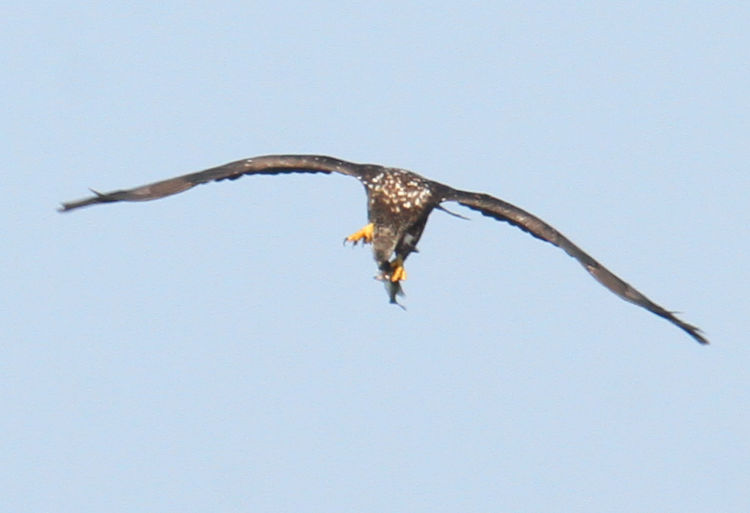
This is at 600mm of course, and cropped significantly here – this is just shy of full resolution – and so it was quite distant for this frame, but you can see that not only does it have a small fish that it captured, but it’s attempting to snack on it in mid-flight. This is exactly the reason that teenagers’ insurance rates are so high.
As it got closer, it tucked its capture up under the tail hidden away, obviously having no desire to share.
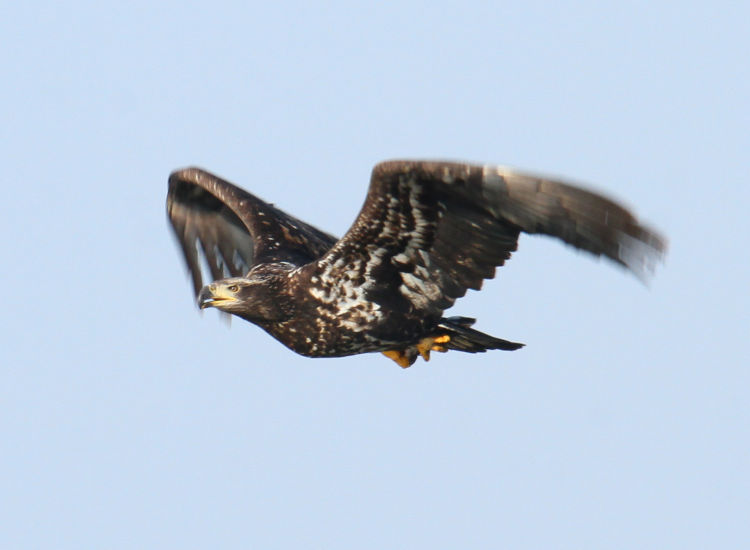
We were psyched to see that the eagle flew up into a perch right along the lakeshore just a few hundred meters ahead of us, and we began the slow stalking to bring us closer for a nice photo opportunity.
Now, we were making it a point to only travel a few meters at a time to avoid spooking the eagle, and stop and examine the trees with the long lens frequently – we’d seen where it entered the trees, obviously about to perch, but not the exact location, so we were endeavoring to pin this down. However, this also required watching our footing on the rocks of the lakeshore, exposed by drastically reduced water levels, and when looking through the long lens, the field of view is obviously quite restricted. So despite best efforts, I never saw the eagle perched, and was alerted by Mr Bugg that it had left the perch and was flying back out over the lake, long before we drew very close. Rats.

Amusingly, you can see that it still has at least vestiges of the tiny fish clasped in its talons as it leaves, somewhat curious since the fish was too small for more than two or three bites to begin with, and the eagle had had more than enough time to polish off such an inadequate appetizer while we had been working closer. Still, this was a much better light angle than we would have achieved had we caught it perched, since that required looking not just towards the sun more, but into the deep shade of the tree canopy, so at least we have these.
Not too long afterwards, I saw a distant adult approaching the tree that held the osprey nest that overlooks that bay of the lake.
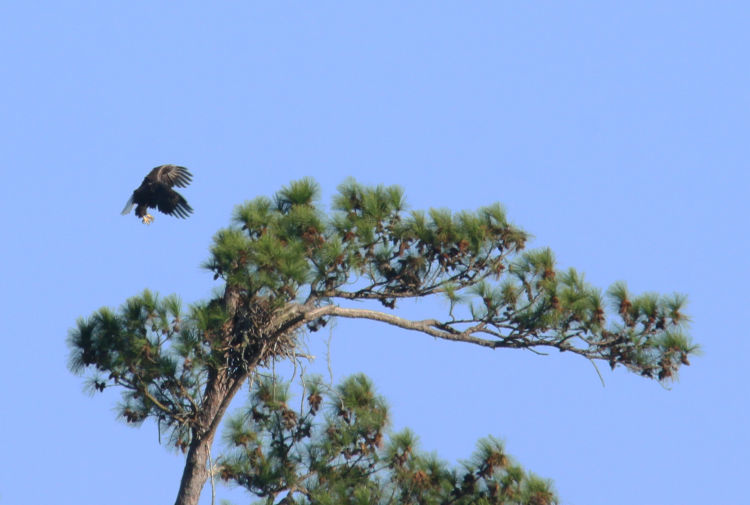
This is the same nest that’s appeared here many times before, which sits high above the lake in a tree that’s largely exposed, as well as distinctively shaped. It clearly belongs to osprey, since it’s not only too small for eagles, I’ve seen it occupied for several years now, though this past season I never saw any kind of feeding activity, even during the hectic day that I was down there – my guess is that the eggs weren’t viable this year. Now, eagles can commandeer old osprey nests for their own, but will build them significantly larger, and it won’t take place at this time of year anyway. Thus, I think we’re just seeing the eagle using a nice vantage and nothing more.
If it could even be said to be a vantage.
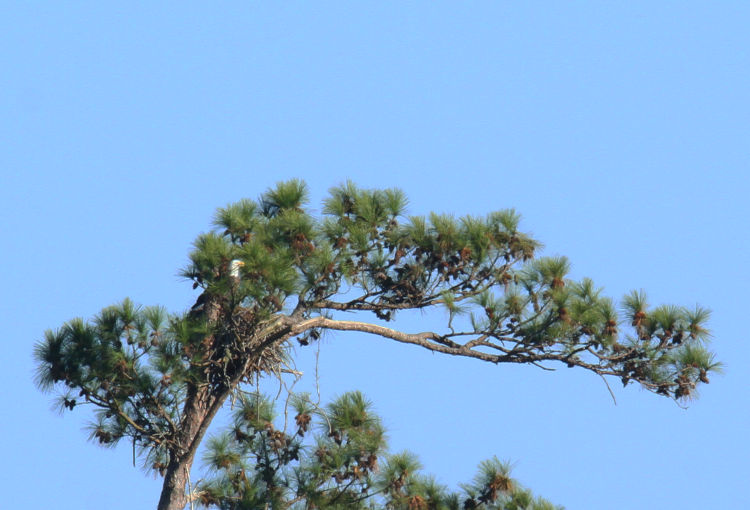
This tree is visible from a large portion of our stalking grounds on this bay of the lake, so it’s easy to keep an eye on, though usually from a distance. Again, this is at 600mm and cropped significantly, but I recall that I could just barely make out the spot of white within the branches by naked eye, only because I knew I should be looking for it.
[I find “naked eye” to be an overused and annoying phrase, but as yet haven’t found anything that conveys the same concept so easily. I’ll work on it…]
A little farther along on our return path, the eagle was now out a bit more prominently, but it had been present for nearly an hour and was showing no signs of leaving or hunting or anything. Again, at least the light was right.
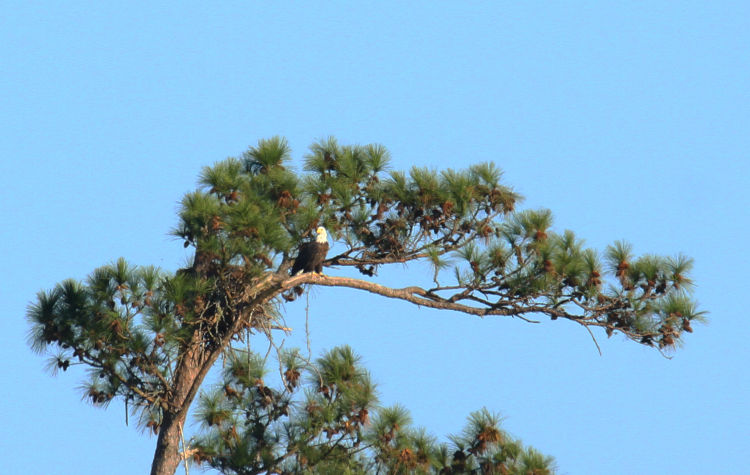
When we were about to leave the area to make another failed attempt at sunset colors, on a lake branch that faced the sun better, we detoured slightly to a spot that would allow us to see this tree from a very short distance, which should have given us a nice view of this eagle, though it was nowhere to be seen when the tree hove into view. Did it see us coming and spook off? Had it simply gotten tired of hanging about and left of its own volition? We have no idea.
I didn’t do much for fall colors this year, but while down there, I took advantage of what could be found in the immediate area.
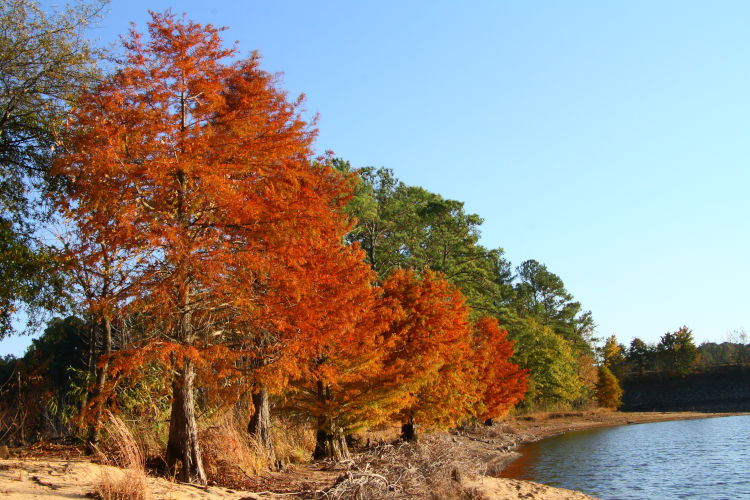
The bald cypress trees (Taxodium distichum) turn a great color this time of year, offering some nice contrast against the ugly and ubiquitous pines. These trunks are normally in the water, but as I said, the lake level is way down. As I type this, I realize something: this particular body of water isn’t actually part of the lake, separated from it by a narrow bridge of land – that’s the shore on the left here. However, this bridge floods routinely during heavy rains and runoff and so this becomes a part of the lake, for a few days at a time, and the bridge is manmade anyway, the former rail bed when the tracks cut through. It occurs to me that, while the main body of the lake is controlled in level by a dam at the far end, this pond shouldn’t be affected by that, but it’s maintaining a matching level here – they’re connected somehow, just not visibly. It might simply be the porosity of the sandy soil that forms the bridge, though I would have though that a rail bed would be a whole lot more structurally stable. Curious.
And finally,
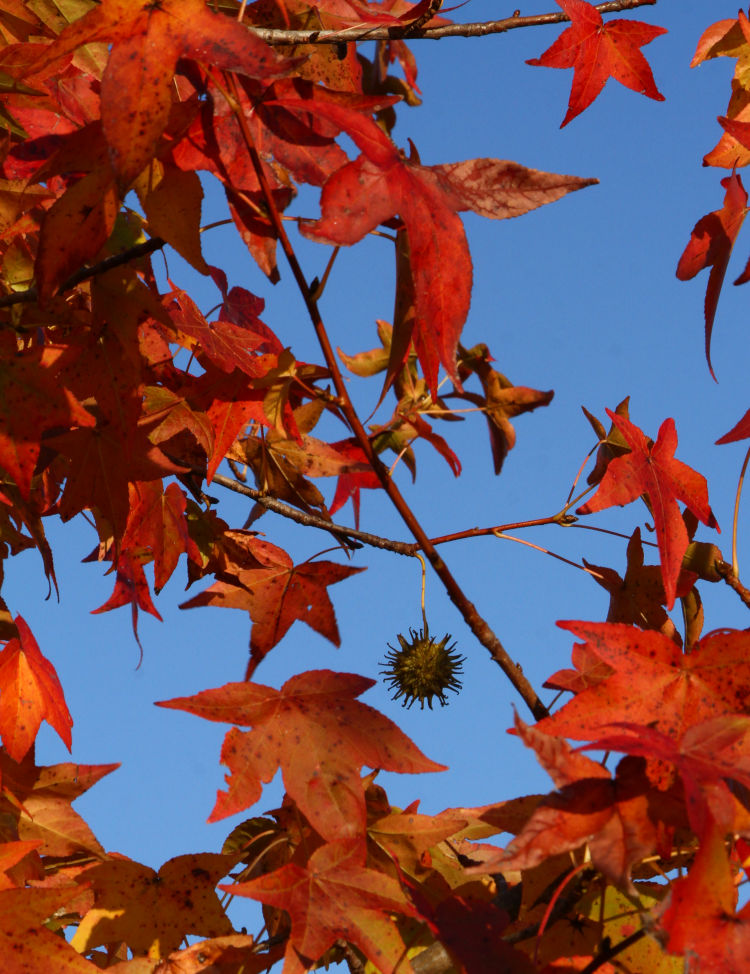
The American sweetgum trees (Liquidambar styraciflua) also turn nice colors in the fall, though no particular vantage point gave me a better working distance, so I went in close instead, isolating the gumball. I’d say I at least made an effort, but I don’t think you’d buy that. Two other images from this outing are better, though you’re not going to see them until the end of the month, so you’ll just have to contain yourself until then. I know it’ll be hard…




















































